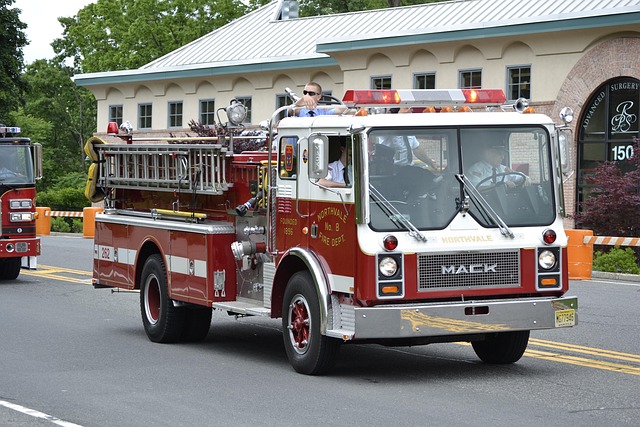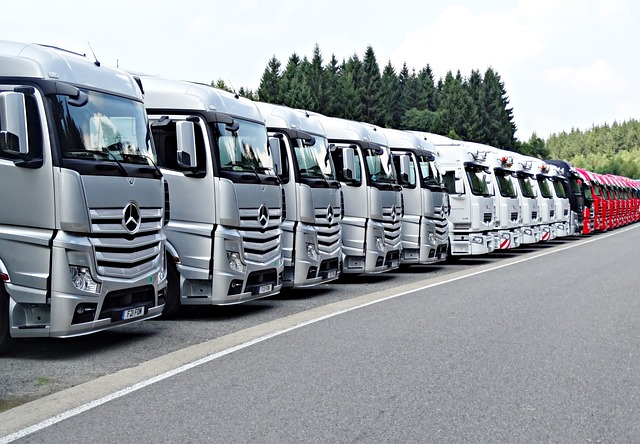Commercial vehicle protection involves a multi-faceted approach to safeguard business fleets from accidents, theft, and liability claims. This includes tailored insurance policies, robust security measures (like alarm systems and GPS tracking), regular maintenance checks, and proactive monitoring services. By integrating these strategies, businesses can minimize financial disruptions, ensure operator and road user safety, and protect their assets in diverse operational environments. Advanced driver monitoring technologies further enhance commercial vehicle protection by enabling real-time location monitoring and promoting safe driving behaviors.
In the dynamic world of commercial transportation, safeguarding your assets is paramount. This article delves into the essential aspects of commercial vehicle protection, equipping business owners with vital knowledge to mitigate risks. From understanding basic protective measures to implementing advanced safety practices, we explore strategies to prevent accidents and theft. Additionally, learn how to manage liability risks effectively. By adopting these best practices, operators can ensure their vehicles and operations remain secure in today’s competitive landscape.
- Understanding Commercial Vehicle Protection: The Basics
- Preventing Accidents: Safety Measures and Best Practices
- Securing Your Vehicle Against Theft
- Mitigating Liability Risks for Commercial Vehicles
Understanding Commercial Vehicle Protection: The Basics

Commercial vehicle protection is an essential aspect of owning and operating a business fleet. It encompasses a range of measures designed to safeguard against potential risks, from accidents to theft and liability claims. Understanding this protection involves grasping several key components that work together to mitigate financial and operational disruptions.
At its core, commercial vehicle protection includes comprehensive insurance policies tailored for businesses. These policies go beyond standard auto insurance, covering specific needs like fleet management, driver safety programs, and vehicle maintenance records. Additionally, it involves implementing robust security measures, such as GPS tracking, alarm systems, and secure parking facilities, to deter theft and unauthorized use. Regular vehicle inspections and well-maintained logs also play a critical role in identifying potential issues before they escalate into accidents or liability concerns.
Preventing Accidents: Safety Measures and Best Practices

Preventing accidents is a top priority for anyone operating a commercial vehicle, as it’s a key aspect of commercial vehicle protection. Implementing robust safety measures can significantly reduce the risk of collisions and injuries. Start by ensuring regular maintenance checks to identify and rectify any mechanical issues promptly. Well-maintained vehicles are less likely to suffer unexpected breakdowns, which could lead to accidents.
Adhering to traffic rules and regulations is another vital best practice. This includes observing speed limits, maintaining a safe following distance, and adhering to load securement guidelines. Conducting defensive driving training for your staff can also make a significant difference. By anticipating potential hazards and adopting cautious driving behaviors, operators can protect not only the vehicle but also fellow road users.
Securing Your Vehicle Against Theft

Securing your commercial vehicle against theft is a critical step in protecting your investment and ensuring peace of mind. This involves implementing several robust security measures, such as installing an alarm system with GPS tracking. Modern alarms not only deter potential thieves but also notify you immediately if unauthorized access is attempted, allowing for swift action. Additionally, investing in high-quality locks and secure parking facilities significantly reduces the risk of theft.
Moreover, commercial vehicle protection extends beyond physical security. Ensuring that your vehicle’s systems are regularly maintained and up-to-date can prevent breakdowns and reduce the chances of becoming stranded, thus minimizing potential liability issues. Using reliable monitoring services and keeping detailed records of maintenance checks can help you stay proactive in protecting your business interests and keeping your operations running smoothly.
Mitigating Liability Risks for Commercial Vehicles

Commercial vehicles, due to their size and operation in diverse environments, face unique risks that require tailored protection strategies. Effective risk mitigation begins with comprehensive insurance policies designed specifically for commercial fleets. These policies cover not just physical damage but also liability arising from accidents involving third parties. Regular maintenance checks are crucial; they help identify potential hazards and ensure the vehicle meets safety standards, reducing the likelihood of accidents.
Additionally, advanced tracking systems and driver monitoring technologies offer robust commercial vehicle protection. These tools enable real-time location monitoring, helping businesses track their fleets and drivers for improved safety management. They also assist in preventing unauthorized use, theft, and ensuring responsible driving behavior, thereby significantly lowering liability risks.
Commercial vehicle protection goes beyond just ensuring a vehicle’s physical integrity. It involves a comprehensive approach to safeguard against accidents, theft, and liability—essential elements for any business owner looking to protect their investment and minimize operational risks. By implementing best practices in safety, security, and risk management, commercial vehicle operators can navigate the road with increased confidence, knowing they’ve taken the necessary steps to mitigate potential issues and maintain a safe, secure, and legally protected operation.
